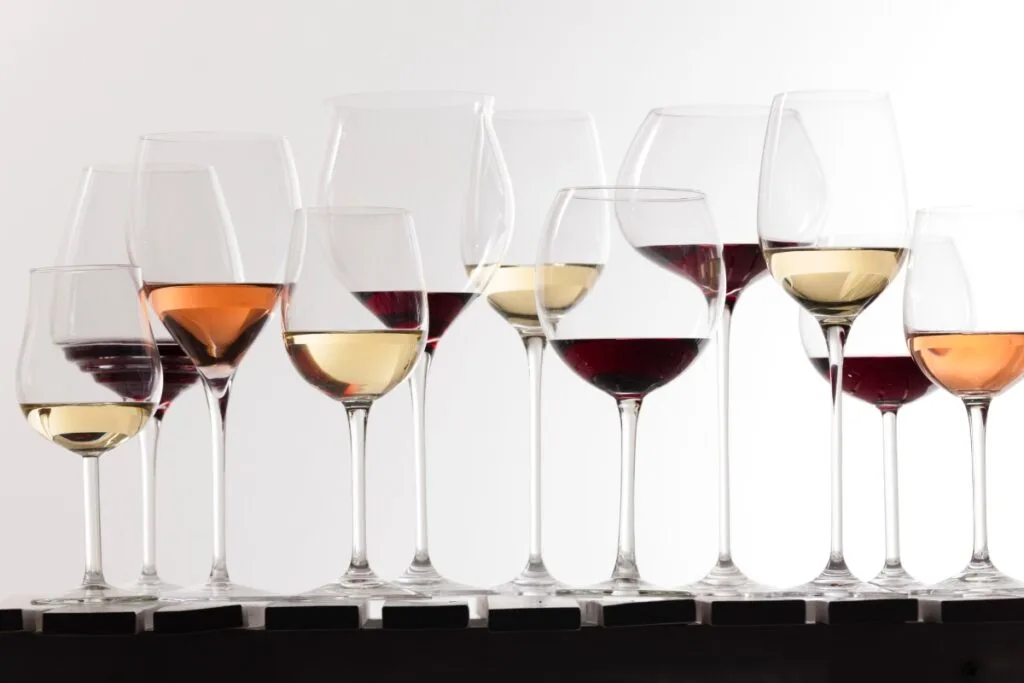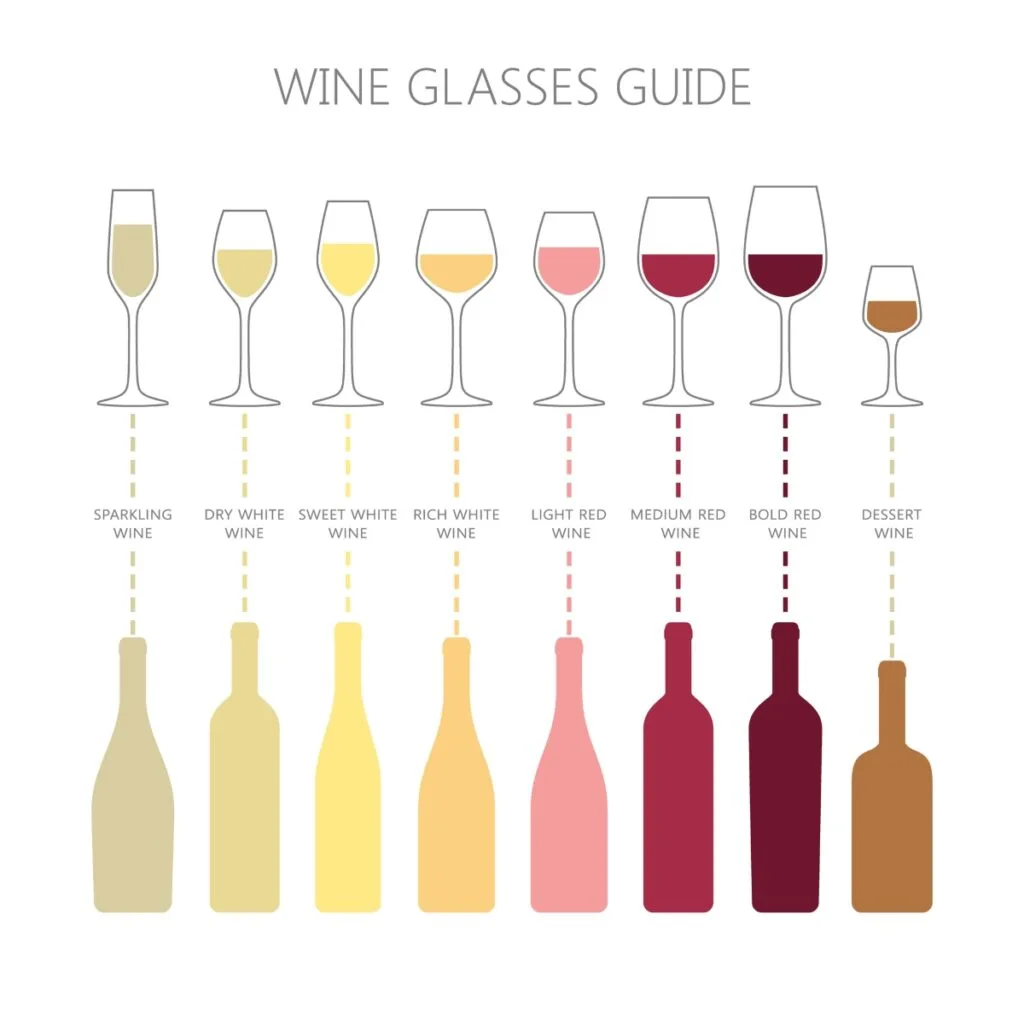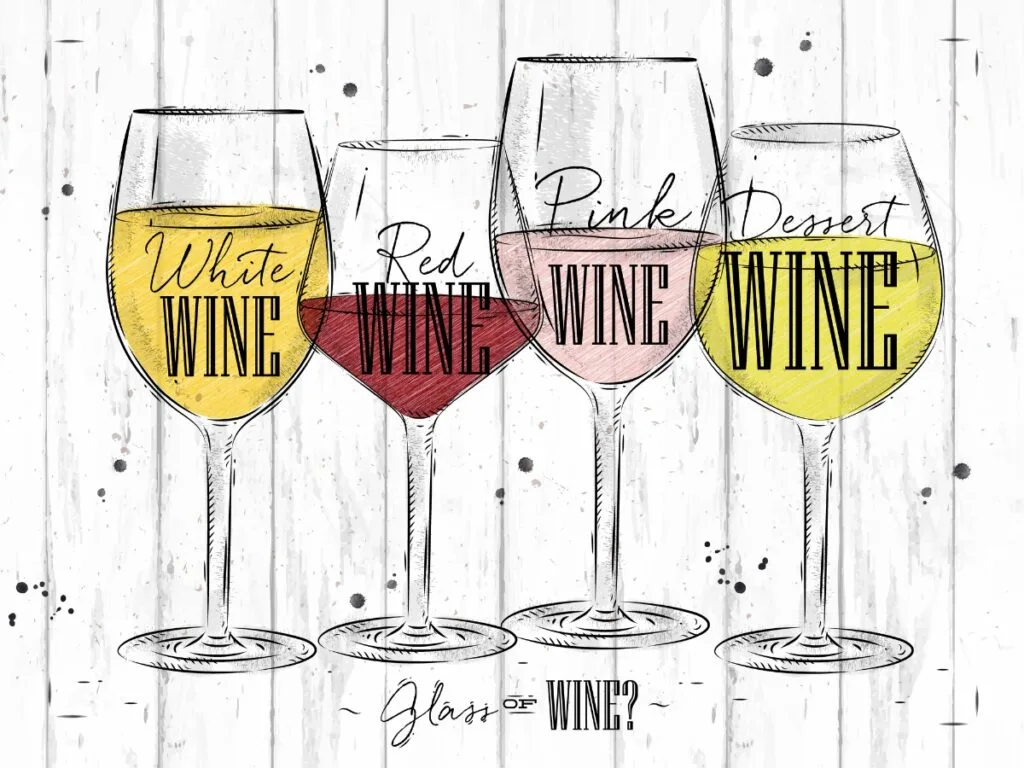As an Amazon Associate, I earn from qualifying purchases with no additional costs for you.
Exploring the Science and Aesthetics of Glassware Selection. Wine, often referred to as the nectar of the gods, has been a source of fascination for humanity throughout the ages. The art of wine appreciation encompasses various facets, from the meticulous cultivation of the vines to the delicate process of swirling the liquid within a glass.
Amidst this intricate journey, one element that captures the attention of both connoisseurs and novices alike is the selection of wine glasses. Specifically, the intriguing distinction between red and white wine glasses has sparked curiosity and debate.
This exploration ventures into the rationale underpinning the use of different glasses for red and white wines, delves into the scientific foundations of their distinct shapes and unveils the subtle nuances that contribute to heightening the pleasure derived from each varietal.
From the cultivation of the vines to the swirling of the liquid in the glass, every detail contributes to the overall experience. One such detail that often captures the curiosity of enthusiasts is the choice of wine glasses, specifically, the distinction between red and white wine glasses.
In this exploration, we delve into the reasons behind the use of different glasses for red and white wines, the science behind their shapes, and the subtle nuances that enhance the enjoyment of each varietal.

TIP: If you want to check out the best refrigerator for wine storage, I recommend trying out the Avation (18 bottles) compressor refrigerator with Wi-fi smart app control cooling system. You can find this refrigerator by clicking here (Amazon link).
Do You Need Different Glasses for Red and White Wine
The selection of the appropriate glass for wine is more than a matter of aesthetics; it is rooted in enhancing the sensory experience. The differences in glassware are not arbitrary; they are purposeful and informed choices made to maximize the unique qualities of each type of wine.
Red and white wines possess distinct characteristics that necessitate tailored glass shapes. To unravel this intricate relationship, it’s essential to first comprehend the key differences between red and white wines.
Red wines, renowned for their robust flavors and complex aromas, require a glass with a larger bowl and a wider opening. This design facilitates a greater exposure of the wine’s surface area to the air, thereby allowing the bouquet to fully develop.
TIP: A suitable wine glass is the basis for enjoying well-being while drinking your favorite wine variety. Here are our favorite ones (Amazon link):
- Bormioli Rocco Crystal Wine Glasses: A set of eight elegant and traditional wine glasses made in Italy for a reasonable price.
- Riedel VINUM Wine Glasses: Luxury set of two wine glasses suitable for any occasion. We just love them!
- Schott Zwiesel Tritan Crystal Glasses: If you like unusual alternatives, a set of six stemless glasses made of crystal glass.
The larger bowl also permits ample swirling, which releases the volatile compounds responsible for the wine’s intricate aromas. In contrast, white wines, often crisper and more delicate, benefit from a narrower bowl and a more modest opening.
This design maintains the wine’s cooler temperature and directs the aromas toward the nose, ensuring a more refined olfactory experience.
The science behind these distinct glass shapes is rooted in how wine interacts with air and the human senses. Red wines typically benefit from aeration; exposure to oxygen softens tannins, rounds out flavors, and unveils the intricate layers of the wine.
The larger bowl of a red wine glass provides a larger surface area for oxygen exchange, allowing the wine to breathe and develop.
On the other hand, white wines are best enjoyed when their refreshing qualities are preserved. A narrower bowl limits the wine’s contact with air, preserving its crispness and aromatic intensity.
TIP: Many people may believe that a carafe is a standard measurement of the volume measurement of wine. Find out how many glasses of wine are in different size carafes in this article. To find out which wines you should decant, read this article.
Why Are Red and White Wine Glasses Different Shapes
The design and shape of wine glasses take into account how the wine interacts with the palate. Red wines, often more tannic and complex, benefit from a wider rim that directs the wine to the sides of the tongue, where the taste buds are more sensitive to bitter and savory flavors.
This placement accentuates the wine’s various components, creating a balanced and harmonious taste experience.

Conversely, white wines are guided to the front of the tongue, where sweetness and acidity are perceived more acutely. A narrower rim emphasizes these attributes, enhancing the perception of the wine’s vibrant characteristics.
TIP: Most wines go bad once you pop the cork within a day or so. But a Coravin Wine Preservation system (available for a great price on Amazon) can extend the life of your opened wine for weeks or even months. It is awesome. You should check it out to see if it fits your lifestyle.
Beyond the scientific underpinnings, the aesthetics of glassware also play a pivotal role in the overall wine experience:
- The sight of wine within a glass is the initial interaction, setting the stage for the sensory journey ahead.
- The visual appeal of the wine’s color and clarity is heightened when the glass is chosen with care.
- The delicate curvature of a wine glass can influence how light refracts through the liquid, showcasing the wine’s hues and textures in mesmerizing ways.
This visual engagement primes the palate and fosters anticipation, underscoring the intricate connection between perception and taste.
Furthermore, the shape of a wine glass can influence how one interacts with the wine throughout the tasting experience. The stem of a wine glass serves a functional purpose beyond mere elegance.
It allows the drinker to hold the glass without transferring body heat to the wine, thus preserving the optimal serving temperature. This becomes particularly relevant with white wines, which are typically served chilled.
The act of swirling, an essential part of wine appreciation, is facilitated by the stem, preventing unnecessary contact with the bowl and avoiding fingerprints on the glass.
Recommendation box: Everything you need to enjoy your wine as much as possible. All recommended products are personally tested and regularly used by experts from this website (Amazon links):
> Ivation Wine Cooler – Energy-efficient wine cooler for 18 bottles with Wi-fi smart app control cooling system.
> Wine Rack – Beautiful, elegant wood rack for up to 7 bottles and the choice of vertical or horizontal storage.
> Durand Wine Opener – Classic vintage wine opener (we like all these classic staff).
> YouYah Iceberg Wine Decanter – The most beautiful and handy wine decanter we personally use.
> Bormioli Rocco Wine Glasses – A set of eight elegant and traditional wine glasses made in Italy.
> Vintorio Wine Aerator – Simple but really useful wine aerator for a reasonable price.
> The Original Vacu Vin Wine Saver – The best wine saver on the market in a package with two vacuum stoppers and two wine servers.
And if you want to become a true connoisseur of wine, we recommend reading the book Wine Folly: The Essential Guide to Wine (Amazon link), where you will find all the information you need about winemaking, wine varieties, flavors, and much more.
How to Know Wine Glass for a White Wine
Your wine glass for white wine will usually be a bit less round than the red wine glass, but not as tall as a Champagne flute. While science and aesthetics provide a solid framework for the selection of white wine glasses, personal preference, and context also play a significant role.
Modern wine culture encourages experimentation and breaking away from traditional norms. Some wine enthusiasts opt for unconventional glasses to emphasize certain characteristics or elevate the theatrical aspect of wine tasting, such as using a red wine glass for white wine.
These variations may challenge conventional wisdom but can lead to unique and enjoyable experiences, provided they are well-considered and intentional.
How to Know Wine Glass for a Red Wine
A red wine glass will have a full, round bowl – preferably with a stem – in order to let all the aromas out successfully. Red wine needs to “breath”.
Once the wine is sitting in the large bowl of a glass, the drinker will usually swirl the wine around in the glass in order to let air get to it. If the glass is not large enough, the wine will not have room to breathe and the wine enthusiast will not have room in the glass to swirl without spilling.
TIP: Stemless wine glasses have become increasingly popular in recent years. Check out the main reasons why you should consider buying them in this article. But how can you swirl the wine in a stemless glass? Many people believe wine glasses need stems. Find out more about reasons why wine glasses need stems in this article.
Difference Between Red and White Wine Glasses

The distinction between red and white wine glasses lies in their design and purpose, each tailored to enhance the specific characteristics of their respective wine types.
These differences encompass the shape of the glass, the size of the bowl, the width of the rim, and even the stem length. Let’s delve into the key differences between red and white wine glasses:
Glass Shape:
- Red Wine Glass: Red wine glasses typically have a larger bowl with a rounded shape. The bowl’s generous size provides ample surface area for the wine to come into contact with the air, promoting aeration and allowing the wine’s flavors and aromas to develop fully.
- White Wine Glass: White wine glasses tend to have a narrower bowl with a more upright shape. This design helps preserve the wine’s cooler temperature and focuses the aromas towards the nose, enhancing the appreciation of the wine’s delicate and nuanced bouquet.
Bowl Size
- Red Wine Glass: The larger bowl of red wine glass allows for a greater oxygen exchange with the wine. This is particularly beneficial for red wines, as the exposure to air softens tannins, opens up complex flavors, and reveals layers of aromas that might otherwise remain hidden.
- White Wine Glass: The narrower bowl of a white wine glass limits the wine’s interaction with the air, maintaining its crispness and freshness. White wines are often served at cooler temperatures, and the smaller bowl helps retain these qualities throughout the tasting.
Rim Width
- Red Wine Glass: Red wine glasses typically have a wider rim. This design directs the wine to the sides of the tongue, where the taste buds are more sensitive to bitter and savory flavors. It enhances the perception of the wine’s structure, tannins, and complexity.
- White Wine Glass: White wine glasses feature a narrower rim, guiding the wine to the front of the tongue where sweetness and acidity are more pronounced. This accentuates the wine’s vibrant and refreshing characteristics.
Stem Length
- Both Red and White Wine Glasses: Both types of glasses typically have stems that allow the drinker to hold the glass without warming the wine with their hand. This is especially important for white wines, which are best enjoyed at cooler temperatures.
Aesthetics
The visual appeal of wine in a glass is integral to the overall experience. The shape of the glass can influence how light refracts through the liquid, showcasing the wine’s color and texture. The aesthetic elements of a wine glass contribute to the anticipation and sensory engagement of the tasting experience.
Context and Preference
While there are traditional guidelines for selecting the appropriate glass, personal preference and the context of the tasting can also influence glassware choices. Some enthusiasts may choose to use alternative glass shapes to emphasize certain aspects of wine or to add an element of novelty to the experience.
TIP: Have you thought about putting your wine glasses in the dishwasher? Read this article before you do. And if you’re scratching your head over whether to chill a glass of red wine or white wine, we’ve got you covered in this article.
Conclusion
In conclusion, the choice of wine glass is a deliberate and nuanced decision that bridges the realms of science, aesthetics, and personal preference. The distinct shapes of red and white wine glasses are not arbitrary; they are tailored to enhance the sensory journey of each varietal.
Scientifically, the glass shapes influence how the wine interacts with air and the palate, either accentuating complexity or preserving delicacy.
Aesthetically, the glass’s form engages the senses from the moment the wine is poured, setting the stage for an immersive experience. Ultimately, the interaction between the wine and its vessel is a dance that encompasses tradition, innovation, and the art of savoring life’s fleeting moments.
TIP: Check out this page for a complete list of wine products and accessories I love. You’ll find my recommendations for wine refrigerators, decanters, and aerators and the best place to buy wine online. Click here to see the complete listing.
